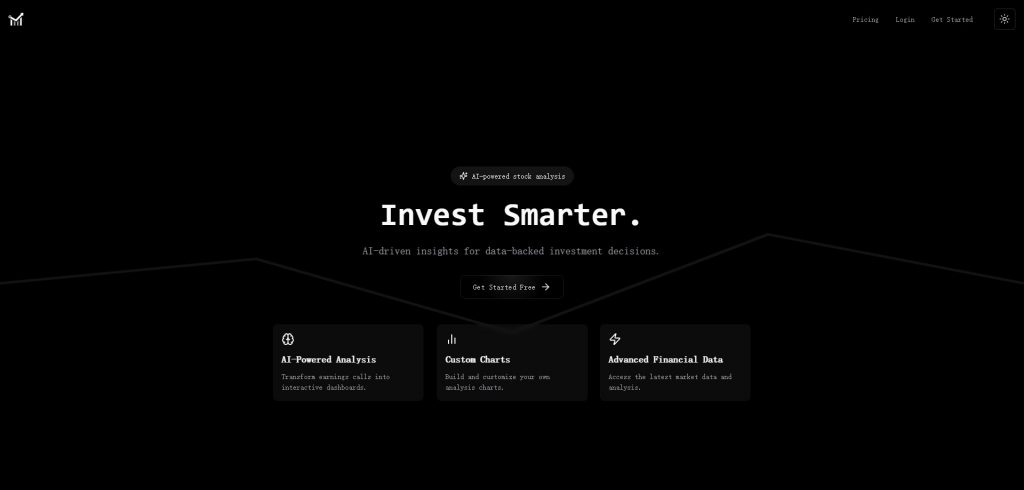20 Free Tips For Picking Best Ai Stock Websites
20 Free Tips For Picking Best Ai Stock Websites
Blog Article
Top 10 Tips To Assess The Strategy Customization Of Ai Stock Trading Platforms
Strategy customization is a key characteristic of AI platform for predicting and analyzing stocks that allow users to tailor the platform to their own specific goals in trading as well as their risk tolerance and market conditions. A platform that has a range of customization features will enhance your trading. Below are the top 10 suggestions for assessing the ability to customize your strategy on these platforms:
1. Evaluate Pre-Built Strategy Templates
A variety of templates: Find out whether the platform offers a variety of already-designed trading strategies (e.g. day trading, swing investing, long-term investments).
The user's experience is a good indicator.
Performance history: See whether the platform has historical performance data on strategies that have been pre-built.
2. Review Customized Strategy Creation
Drag-and-drop tools: Search for platforms that offer intuitive drag and drop interfaces to customize strategies.
Coding options: Check if the platform supports custom-made coding (e.g., Python, R, or proprietary scripting languages) for advanced users.
Flexibility. You must identify key elements such as the parameters for risk management, entry and exit regulations, and any other elements of your plan.
3. Check for Backtesting Capabilities
Historical data: Check if your platform offers enough historical data for testing backtesting strategies.
Customizable Parameters: It is important to be able to adjust parameters, such as indicators and timeframes, when backtesting.
Performance metrics - Check to see if your software provides detailed performance indicators (e.g. the win rate, Sharpe coefficient or drawdown) for all strategies tested back.
4. Evaluate Real-Time Strategy Testing
Paper trading: Ensure the platform provides the option of paper trading or simulation to test strategies in real-time without risking capital.
Live testing - Check that you are able to test strategies using small amounts to see how they work.
Real-time Adjustments: Test if you're able to adjust in real-time in response to market conditions.
5. Examine the degree of integration using technological indicators
Check if there is an indicator library.
Custom indicators. You must ensure that you are able to develop or utilize custom indicators to your plan.
Verify the indicators' combination.
6. Check for Risk Management Tools
Stop-loss/take-profit: Ensure the platform allows you to set stop-loss and take-profit levels within your strategies.
Size of the position: Determine if you are able to establish rules for sizing positions (e.g. the amount that is fixed or a percentage of the portfolio) in order to manage the risk.
Risk-reward ratio: Check whether the platform allows setting risk-reward ratios for individual trades or strategies.
7. Evaluate Multi-Asset Strategy Support
Asset classes: Make sure that the platform offers strategies that can be used for multiple asset classes.
Cross-asset strategies: See whether you are able to create strategies that involve multiple asset classes (e.g., Hedging, pairs trading).
Market coverage - Verify that the platform is covered by markets you are in (e.g. US and international markets, copyright and so on.).
8. Review the automation and Execution
Automated trading. Check if the platform allows automated execution based on predefined strategies.
Types of orders: Determine if the platform supports various order types (e.g., market, limit stop, limit) to execute a strategy.
Latency: Determine if the platform can make trades swiftly, particularly for trading strategies that use high-frequency.
9. Check out Strategies Optimization Tools
Optimization of parameters: Ensure that the platform provides tools to optimize the parameters of your strategy (e.g. grid search and genetic algorithm).
Machine learning: Ensure the platform has machine learning integrated to refine and improve strategies.
Analysis of scenarios: Check that the platform is able to test strategies in different market conditions (e.g., bear, bull or volatile).
Review User Feedback and Community Support
User reviews: Review user feedback in order to evaluate the platform's capability to adapt strategies.
Community forums. Verify if members can share their knowledge and discuss their strategies in a vibrant community.
Support resources for users - Make sure that the platform provides tutorials and documentation for users to create and improve strategies.
Bonus Tips:
Trial period: Try the customization options of the platform without cost with a demo or demo.
Scalability - Make sure that the platform you select can handle your evolving trading strategies.
Support for customers: Find out if the platform can provide support on strategy-related issues and questions.
With these suggestions to evaluate the strategy customization capabilities of AI platforms for analyzing and predicting stocks, ensuring you choose the right platform that is compatible with your goals in trading and permits you to implement and refine your strategies efficiently. A platform that offers flexible options for customization allows you to change your strategy to meet changing market circumstances and improve your performance. Take a look at the top rated copyright financial advisor blog for site recommendations including trade ai, trader ai, copyright ai trading bot, ai investment app, ai stock picks, stock analysis websites, ai stock picks, best ai stock trading bot free, ai trading bot, incite ai and more.
Top 10 Tips To Assess The Credibility Of Ai Stocks Predicting/Analyzing Trading Platforms
It is essential to examine the reputation and reviews for AI-driven trading and stock prediction platforms to be sure of their reliability, trustworthiness and effectiveness. Here are 10 guidelines for evaluating their reviews and reputation:
1. Check Independent Review Platforms
Review reviews on reputable platforms such as G2, copyright, and Capterra.
The reason: Independent platforms provide unbiased feedback from real users.
2. Analyze user testimonials and cases studies
Tip: Read user testimonials and case studies on the platform's site or third-party sites.
What they do: They give insights into the performance of real-world applications, user satisfaction and the like.
3. Review industry recognition and expert opinions
Tips: Find out whether any industry experts, analysts, or publications with a reputation have reviewed the platform or made a recommendation.
Why Expert endorsements are important: They add credibility to the claims of the platform.
4. Social Media Sentiment
Tip - Monitor social media platforms such as Twitter, LinkedIn or Reddit for comments and sentiments from users.
Social media offers you the an opportunity to listen to opinions and news that are not filtered.
5. Verify Regulatory Compliance
Check if you platform complies the financial regulations (e.g. SEC, FINRA), and privacy regulations (e.g. GDPR).
What's the reason? Compliance helps ensure the platform runs legally and ethically.
6. Seek out transparency in performance measures
TIP: Find out if the platform provides transparent performance metrics including accuracy rates, ROI and backtesting results.
Transparency builds trust, and also allows users to assess the effectiveness of a system.
7. Look at Customer Support Quality
Tips: Read user reviews on the platform as well as their effectiveness in providing assistance.
Why: Reliable support is crucial to resolve issues and providing a positive user experience.
8. Check for Red Flags in Reviews
Tips: Watch out for complaints such as poor performance or hidden fees.
A pattern of consistently negative feedback is a sign that there could be a problem with the platform.
9. Evaluation of Community and User Engagement
Tips: Find out whether the platform is engaging with users often and has a vibrant community.
Why: A strong user community is a sign of support and satisfaction.
10. Review the history of the business
Find out the history of the company as well as the leadership team and past performance in the area of financial technology.
The reason: A history of success increases confidence in the reliability of the platform and knowledge.
Bonus Tip: Compare Multiple Platforms
Compare the reviews and reputation of different platforms to find out which is the best for you.
Following these tips It is possible to look over the credibility and opinions of AI-based trading and stock prediction solutions and ensure you pick an effective and reliable solution. Take a look at the most popular ai stock for blog advice including ai investing app, trading ai bot, trader ai, ai hedge fund outperforms market, ai for stock trading, ai stocks to invest in, best ai trading software, incite, ai stocks to invest in, trader ai review and more.